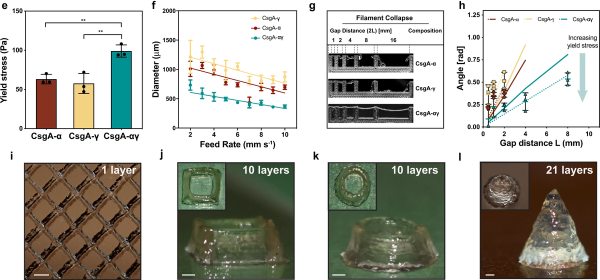Well, whaddya know? It seems that E. coli, the bane of Romaine and spinach everywhere, has at least one practical use. Researchers at Harvard have created a kind of 3D-printable ink that is alive and made entirely of microbes produced by E. coli. Although this is not the first so-called living ink, it does hold the title of the first living ink that doesn’t need any additional polymers to provide structure.

Because the ink is alive, it is technically programmable in the sense that it can self-assemble proteins into nanofibers, and further assemble those into nanofiber networks that comprise hydrogels.
One of the researchers compared the ink to a seed, which has everything it needs to eventually grow into a glorious tree. In this way, the ink could be used as a renewable building material both on Earth and in space. Though the ink does not continue to grow after being printed, the resulting structure would be a living system that could theoretically heal itself.
The ink creation process begins when the researchers induce genetically-engineered bacteria cultures to grow the ink, which is also made of living cells. The ink is then harvested and becomes gelatin-like, holding its shape well enough to go through a 3D printer. It even passes the bridging test, supporting its own weight between pillars placed up to 16 mm apart. (We’d like to see a Benchie.)
Continue reading “It’s Printable, It’s Programmable, It’s E. Coli”












